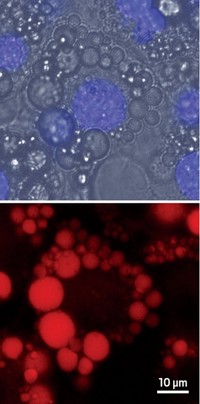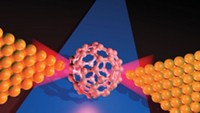Advertisement
Grab your lab coat. Let's get started
Welcome!
Welcome!
Create an account below to get 6 C&EN articles per month, receive newsletters and more - all free.
It seems this is your first time logging in online. Please enter the following information to continue.
As an ACS member you automatically get access to this site. All we need is few more details to create your reading experience.
Not you? Sign in with a different account.
Not you? Sign in with a different account.
ERROR 1
ERROR 1
ERROR 2
ERROR 2
ERROR 2
ERROR 2
ERROR 2
Password and Confirm password must match.
If you have an ACS member number, please enter it here so we can link this account to your membership. (optional)
ERROR 2
ACS values your privacy. By submitting your information, you are gaining access to C&EN and subscribing to our weekly newsletter. We use the information you provide to make your reading experience better, and we will never sell your data to third party members.
Physical Chemistry
Chemically tweaked nanotubes trap trions
Adding functional groups to carbon nanotubes lengthens lifetime of the unusual subatomic quasiparticles
by Neil Savage, special to C&EN
October 31, 2019

Thanks to a clever chemical strategy, researchers have trapped an unusual subatomic quasiparticle known as a trion using an altered carbon nanotube. The results will make it easier to study trions and perhaps use them in sensing, bioimaging, and quantum computing (ACS Cent. Sci. 2019, DOI: 10.1021/acscentsci.9b00707).
A trion emerges from interactions among subatomic particles such as electrons. When a photon strikes a material, the energy gets absorbed and can gives rise to an exciton, a pairing of a negative electron and its positively charged counterpart, a hole. Occasionally, though, an exciton combines with an extra electron or an extra hole to form a trion, though trions usually disintegrate in a few trillionths of a second. Physicists who study trions do so in 2-D semiconductors at cryogenic temperatures, which allows them to last longer and lets physicists probe the processes involved in LEDs and photovoltaics.

YuHuang Wang, a chemist at the University of Maryland, and colleagues found that by chemically modifying single-walled carbon nanotubes to add surface defects and exciting the nanotubes with a light source, the nanotubes can trap resulting trions, causing them to last more than 100 times as long as free trions at room temperature. Wang says the defects—functional groups bound to the nanotubes’ surface—act as sort of virtual beakers in which to hold the trions. These groups alter the nanotubes’ electronic properties, creating areas with energy wells that the trions can fall into.
The researchers added different alkyl and fluorinated alkyl groups to the nanotubes to get different energy wells, which gave them the ability to control the energy level and stability of the trions. “There’s a whole series of functional groups we can make work,” Wang says.
When a trion decays, it releases a photon, so scientists could detect the quasiparticles by seeing the light they emitted, which was at a distinct wavelength from excitons that were also produced by illumination. Not only was the luminescent lifetime of the nanotube-trapped trions longer than their free counterparts, the trions were also more than seven times as bright as ones previously seen.
Kazunari Matsuda, a physicist at Kyoto University’s Institute of Advanced Energy, calls the work “significant and interesting.” Being able to trap trions with this brightness and stability at room temperature is an unexpected achievement, he says.
The wavelength of light emitted varies depending on the attached functional group, so nanotubes could act as sensors that detect chemical binding by a shift in the emissions wavelength of the trions produced. Trions’ emission is in the near-infrared portion of the spectrum and can penetrate tissue, so they could possibly be used for high-resolution imaging of blood vessels, for instance. Trions can also be used to couple an electron’s spin to a photon, which means trions could play a role in quantum computing, Wang adds.
CORRECTION
A caption was updated on Nov. 5, 2019, to correct the type of image shown: it is a photoluminescence image, not a magnetoluminescence image. The caption was also updated to indicate the exact diameter of the nanotubes.





Join the conversation
Contact the reporter
Submit a Letter to the Editor for publication
Engage with us on Twitter